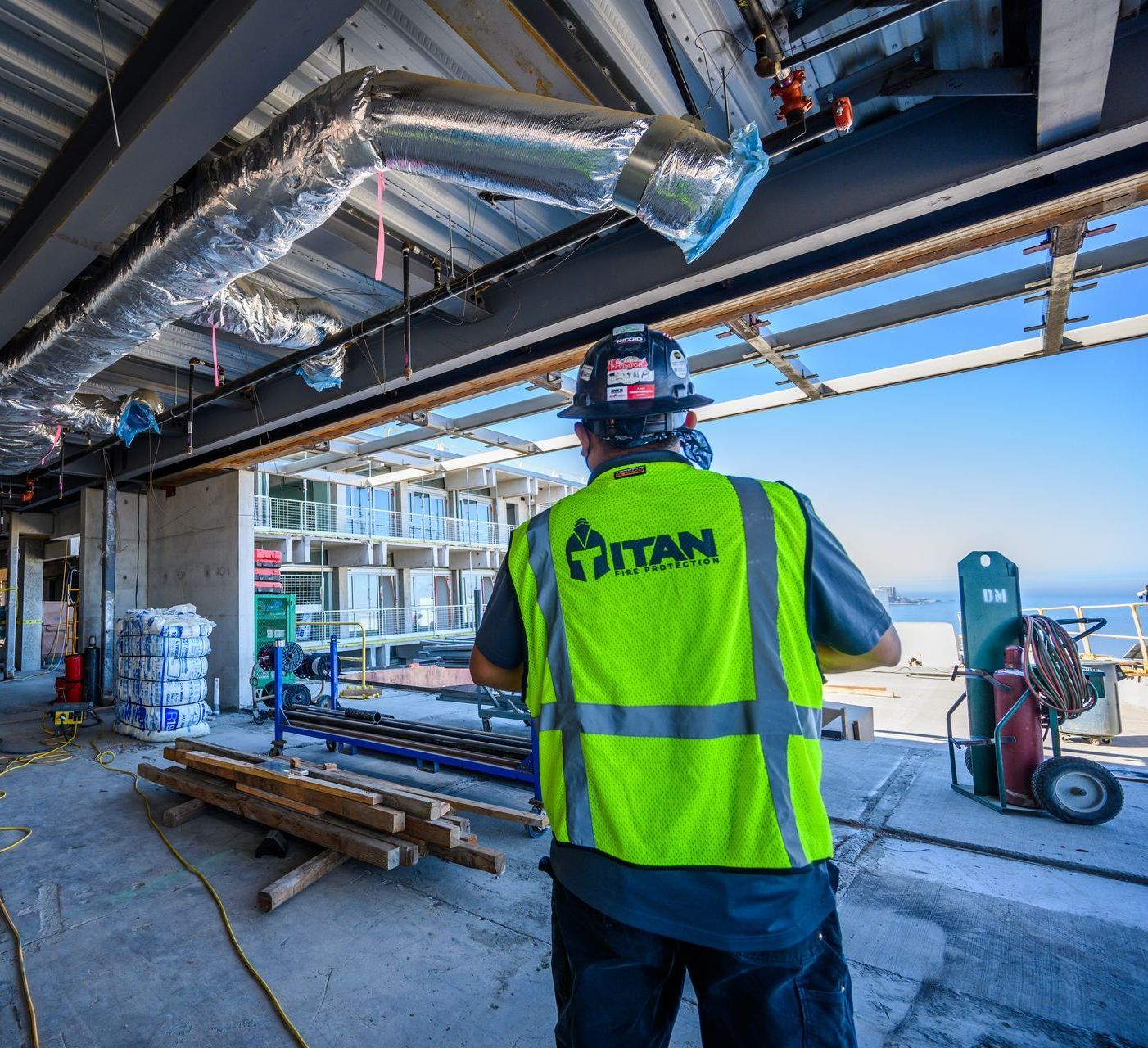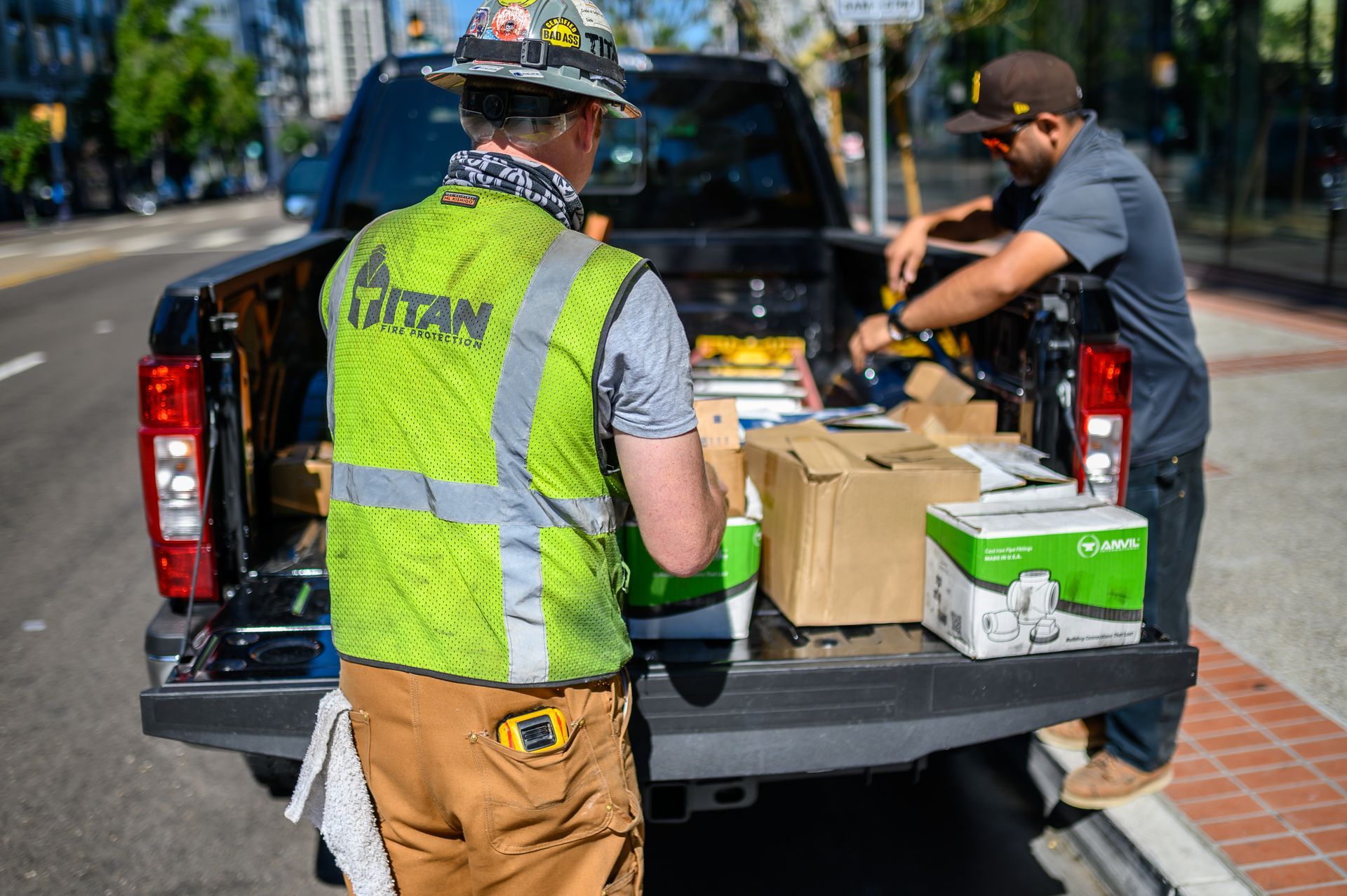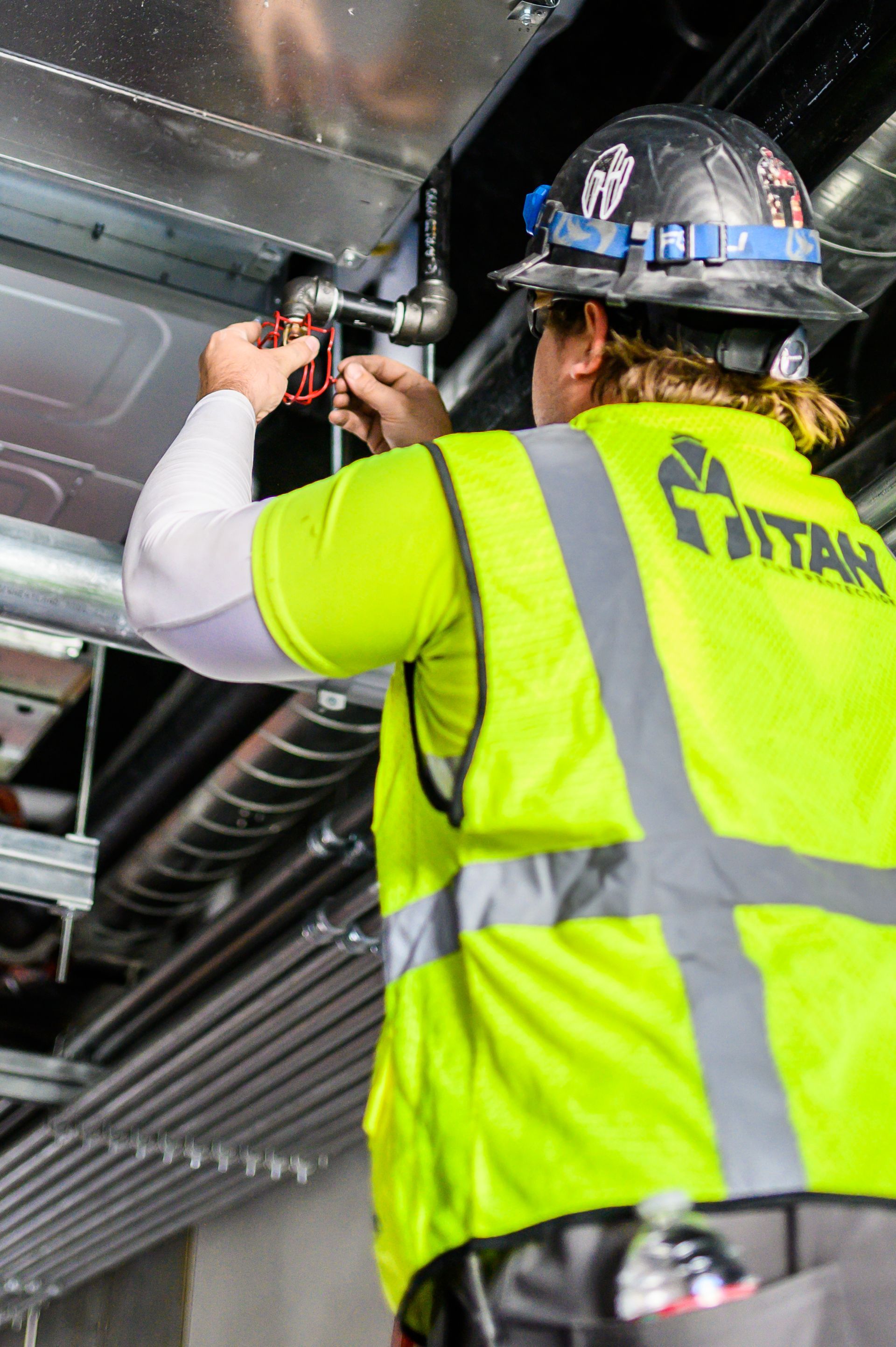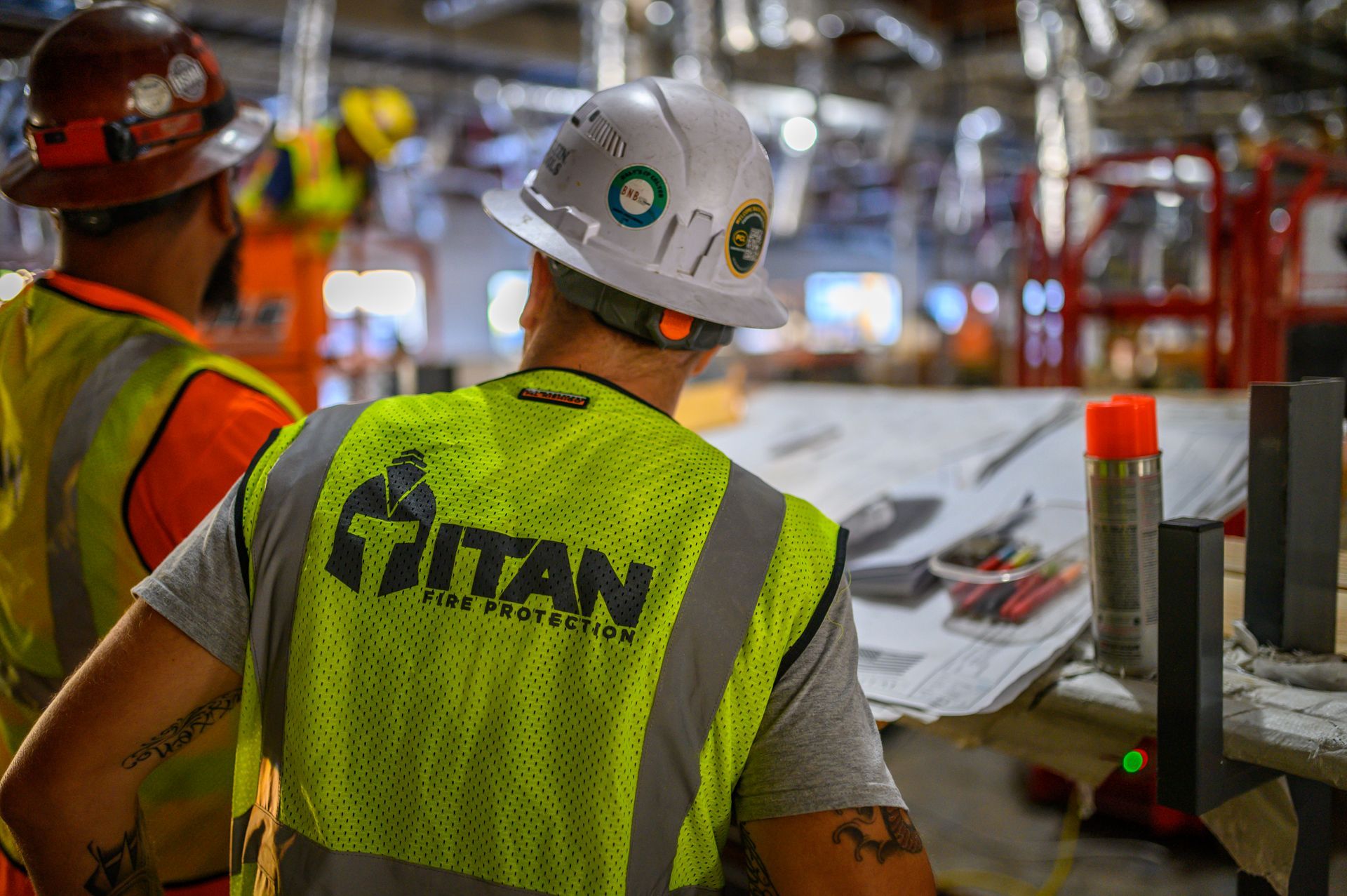Blog

May 15, 2025
When considering leasing or purchasing a commercial property, it's easy to focus on location, layout, and aesthetics. But one critical factor that often gets overlooked is fire protection . Understanding the fire safety systems in a building before signing on the dotted line can save you time, money, and potential liability down the line. Here’s what you need to know before moving into a new commercial space: 1. Existing Fire Protection Systems Start by identifying what systems are already in place: Fire Sprinklers – Are they present? Are they up to code? When were they last inspected? Fire Alarms – Does the building have a functional fire alarm system with detection devices throughout the property? Fire Extinguishers – Are they properly placed, up to date, and sufficient for the building’s size and use? Fire Suppression Systems – Are there specialized systems installed for kitchens, server rooms, or high-risk areas? Understanding the condition and compliance of these systems helps you assess potential upgrades or repairs before you commit. 2. Inspection & Maintenance Records Ask for records of the most recent fire inspections and maintenance logs. These documents provide insight into: The building’s history of code compliance Any recurring issues or violations How well the current owner or property manager has maintained life safety systems If documentation is missing or incomplete, that’s a red flag that may signal future costs or delays in occupancy. 3. Occupancy Classification and Hazard Use How a building is used plays a significant role in the type of fire protection systems it needs. Is it classified as an office, retail, restaurant, or industrial space? Each occupancy type has its own fire code requirements. For example: A warehouse storing flammable materials will require more robust suppression systems than a general office. A restaurant kitchen needs a UL 300-compliant fire suppression system and sprinklers. Knowing your intended use helps you plan for necessary upgrades and ensures you’re not violating local or national fire codes. 4. Exit Paths and Emergency Lighting Safe evacuation is just as necessary as fire suppression. Before committing to a space, evaluate: The number and placement of exits Whether emergency exit signs and lighting are functional If exit routes are accessible, unblocked, and clearly marked Inadequate egress can be a major code violation and pose serious safety risks for future occupants. 5. Local Fire Code Compliance San Diego has its own fire code requirements based on California and NFPA standards. Before occupying a building, you may need to: Get a fire department inspection Obtain a certificate of occupancy Ensure your space meets ADA and egress requirements Working with a licensed fire protection contractor like Titan Fire & Life Safety can help identify compliance issues early and streamline the permitting process. 6. Future Expansion or Remodeling Considerations If you plan to remodel or expand the space, be aware that structural or occupancy changes can trigger new fire protection requirements. It’s smart to involve fire protection professionals during planning to avoid costly surprises. Final Thoughts Fire protection isn’t just a box to check—it’s a foundational part of building safety, business continuity, and legal compliance. Before signing a lease or purchasing a property, take the time to evaluate its fire safety systems, code compliance, and upgrade potential. At Titan Fire & Life Safety , we offer pre-occupancy evaluations, system inspections, and code consulting to ensure your property is safe, compliant, and ready for business. Need help assessing a new space? Contact Titan Fire & Life Safety today to schedule a fire protection consultation before you move in.

April 7, 2025
Quality, safety, and performance are crucial in the fire protection industry. At Titan Fire & Life Safety, we proudly operate under the merit shop philosophy—a principle that promotes excellence, opportunity, and a results-driven culture. But what does that mean for fire protection professionals, and why does it matter? What Is a Merit Shop? A merit shop is a business that rewards employees and subcontractors based on performance, skill, and contribution—not union affiliation or seniority. This approach emphasizes fairness, individual achievement, and the belief that the best ideas and the hardest workers rise to the top. In practical terms, this means that advancement is earned, not given at Titan. High standards are maintained, and we foster a culture where everyone has the chance to succeed based on their merit. Why It Matters in Fire Protection The merit shop philosophy directly impacts the quality of work in fire protection. Here’s how: 1. Performance-Driven Excellence Merit-based systems naturally push teams to deliver the highest quality of work. Whether it's designing a sprinkler layout or performing a system inspection, every task is done with care, precision, and pride. 2. Faster Innovation and Adaptability A non-union structure allows for quicker decision-making, better communication, and more adaptability in changing environments. This flexibility is especially critical in an industry where codes, technologies, and building requirements evolve rapidly. 3. Opportunities for Growth At Titan, entry-level technicians can work their way up through hands-on experience, training, and certifications. Our team members know they are rewarded for their efforts, which builds motivation and long-term loyalty. 4. Cost-Effective Service for Clients Because we reward productivity and efficiency, clients benefit from streamlined workflows and reduced overhead without compromising on quality or safety. A Culture of Accountability and Empowerment We believe that people perform best when they know their work matters. The merit shop model creates a workplace that values accountability, teamwork, and skill—an ideal foundation for delivering critical life safety services. Final Thoughts The merit shop model offers the ideal path for fire protection professionals who want to grow their skills, be recognized for their efforts, and be part of a team that values excellence. At Titan Fire & Life Safety, we don’t just install and inspect systems—we build a culture of integrity, professionalism, and opportunity.

March 20, 2025
Fire sprinkler systems are one of the most effective fire protection solutions available, playing a critical role in saving lives and minimizing property damage. Whether installed in commercial buildings, industrial facilities, or residential homes, these systems provide an essential layer of safety by automatically detecting and suppressing fires before they spread. We’ll explore the basics of fire sprinkler systems, how they work, and why they are a crucial investment for fire protection. How Fire Sprinkler Systems Work Fire sprinkler systems are designed to respond quickly to a fire, activating only in areas where heat triggers them. Here’s how the process works: Heat Detection: Each sprinkler head is equipped with a heat-sensitive element, usually a glass bulb filled with a liquid that expands when exposed to high temperatures. The bulb bursts once the temperature reaches a specific threshold (typically 135°F-165°F), triggering the sprinkler head. Water Discharge: When the sprinkler head activates, water is immediately released to suppress the fire. Unlike what is commonly seen in movies, only the sprinkler heads closest to the fire activate, rather than the entire system. Fire Suppression: The discharged water rapidly cools and extinguishes the fire, preventing it from spreading to other areas. The system is designed to control fires efficiently while minimizing water damage. Alarm Notification: Many fire sprinkler systems are integrated with fire alarm systems that notify building occupants and emergency responders when activated. Types of Fire Sprinkler Systems Different environments require different fire sprinkler systems to combat fire hazards effectively. Here are the most common types: Wet Pipe Sprinkler System: The most common type, these systems keep water in the pipes at all times, allowing for an immediate response when a sprinkler head is triggered. Dry Pipe Sprinkler System: Designed for areas prone to freezing, these systems use pressurized air or nitrogen in the pipes instead of water. The air is released when activated, allowing water to flow through the pipes. Pre-Action Sprinkler System: Typically used in environments with sensitive equipment, such as data centers and museums, these systems require two triggers before water is released to prevent accidental activation. Deluge Sprinkler System: Used in high-risk areas such as chemical plants and aircraft hangars, these systems release water from all sprinkler heads when activated. Benefits of Fire Sprinkler Systems Investing in a fire sprinkler system provides several advantages, including: Life Safety: Fire sprinklers significantly reduce the risk of fatalities by controlling fires before they can spread. Property Protection: These systems help minimize structural damage and financial losses by suppressing fires quickly. Automatic Operation: Unlike manual firefighting measures, fire sprinklers activate automatically, ensuring an immediate response to fire incidents. Compliance with Fire Codes: Many local and national fire codes require fire sprinkler installations in commercial and residential properties to enhance safety. Lower Insurance Costs: Many insurance companies offer discounts to properties with fire sprinkler systems, recognizing their effectiveness in reducing fire damage. Final Thoughts Fire sprinkler systems are an invaluable component of any fire safety plan. Their ability to detect, control, and suppress fires makes them one of the most effective fire protection measures. If you’re considering installing a fire sprinkler system or need maintenance for your existing system, Titan Fire Protection is here to help. Contact us today to learn how we can enhance your fire safety measures and ensure compliance with fire protection standards.



